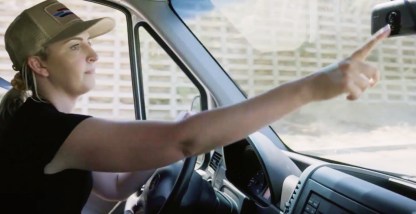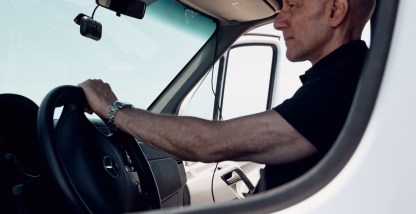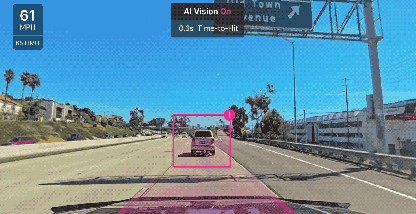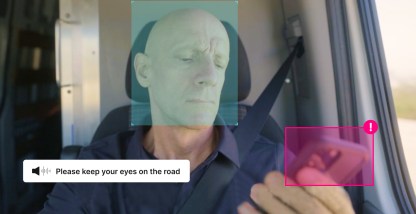No profession is without risk, and those in trucking understand this well. Many transportation industry companies, from limousines to food delivery services, and commercial trucks use dash cams.
As you look ahead to the opportunities to improve productivity and fleet safety, consider implementing dash cams. They could be an effective tool to help your business thrive and protect not only your assets and your bottom line, but the most important part of your company, your employees.
Time is precious, so here’s a shortcut to the best methods for finding the right dash cam to meet your needs. There are many options with various features on the market, so understanding these differences can affect your business tremendously.
We’ve laid out the most important features to consider, based on the experience of industry professionals who integrated dash cams with incredible results. There is no time like right now to safeguard your people and your profits.
1. Why use a dash cam?
Research suggests the commercial trucking insurance sector is poised for major growth for one reason, as the potential for financial growth increases, so does risk aversion.
Keven Thibeault, the owner of Nybll, a health food delivery service company, implemented Motive’s Smart Dashcam at just the right time. He wanted to ensure top-tier safety for his employees while utilizing integrated GPS tracking to ensure prompt delivery and customer satisfaction.
Just weeks after the Smart Dashcams were installed, one of his delivery vehicles was struck from behind by a motorcycle on the interstate. The motorcyclist, going significantly faster than surrounding traffic, was injured.
The police arrived on the scene and with the footage, they were clearly able to see what happened. Nybll’s driver was exonerated, saving the company an estimated $500,000 in settlements. Dash cam testimonies like the one prior reinforce the fact that these devices are necessary to protect your business.
2. What are the key features to look for?
Each dash cam has its own identity, fit for different lifestyles and businesses. Here’s a list of the most sought after features to help you make the best choice for your team.
- HD or High-Res Image Capture
Modern dash cams have recording capabilities up to 1080p, some even boasting 170-degree wide-angle lenses to capture a fuller field of view. And yes, just about all of them record audio (and can be muted) too. - Night Vision
Thanks to the help of WDR (wide dynamic range) technology, dash cams are now capable of capturing deep darkness and piercing brightness in the same shot. - Built-In GPS Tracking
Some models record GPS tracking data directly into their video clips so you can check vehicle location, speed, and route through mapping software. Most options come with a built-in module so there’s no need for proprietary components. - Loop Recording
If you’ve ever recorded over an old VHS tape accidentally, don’t fret. Dash cams with this technology will only overwrite the oldest data first in a continuous loop so you’re never really out of storage capacity. - Accident/Motion Sensors
Devices can work on your behalf with G-Sensor technology and, if they sense a collision, will take frame-by-frame photos of collision footage and lock them securely.
3. How to choose the best dash cam that meets your needs
No one knows your business better than you. Here are some helpful questions to narrow your search for the perfect dash cam.
- Road-facing or dual-facing dash cams – Road-facing are the most common type of dash cams. If you want to be thorough, you can install a dual-facing dash cam that can streamline coaching and help protect drivers.
- Standby Battery vs. 12V Auxiliary Power – If your dash cam doesn’t hardwire into a power source, it may have standby batteries that won’t shut off until all data is saved.
- App / Desktop Software Inclusion – Various models will include desktop software to allow the driver or dispatcher to track drivers. It also allows a view from the driver’s perspective in real-time.
These questions can help you make the right decision, but what kind of an impact can dash cams have on a business? Let’s look at some real-world examples.
4. How have dash cams helped fleets?
Although there is no one-size-fits-all answer for any trucking situation, dash cams have proven time and again to solve fleet needs effectively.
Take for instance the story of D&A McRae, Inc., crude oil transporters based in Utah, who installed the Motive Smart Dashcam some time after a tragic fatal collision. The events of that day were not made right through technology, but installing dash cams did save them time and legal costs from a separate collision that would have cost them close to $50,000 in damages.
Then there are companies like ARL Transport, LLC, who started in 1978 at the crux of the deregulation of transportation and are still searching for innovative ways to improve their business.
They installed the Motive Smart Dashcam to reduce their owner-operators’ liability. In the event video footage proves their driver had no fault in a collision, ARL pays the insurance deductible in full, building trust and confidence among fleet operators.
Or there is the case of Miller Expedited Freight, Inc. who were able to identify problematic facilities that could pose safety hazards to their drivers by using dash cams.
There are countless examples of the benefits of a dash cam, and these are just a few. As the challenges to doing business evolve, so should the solutions, and adding dash cams to your fleet could make a world of difference.
Ensure safe and profitable results
Whether your business is enjoying steady or astronomical growth, it’s clear that the dash cam technology is a welcomed addition to any size or type of fleet. All across the country, fleets are installing them with fantastic results, and proving that the benefits of this technology outweigh the cost by a mile.
Learn more in this guide to dash cams.









